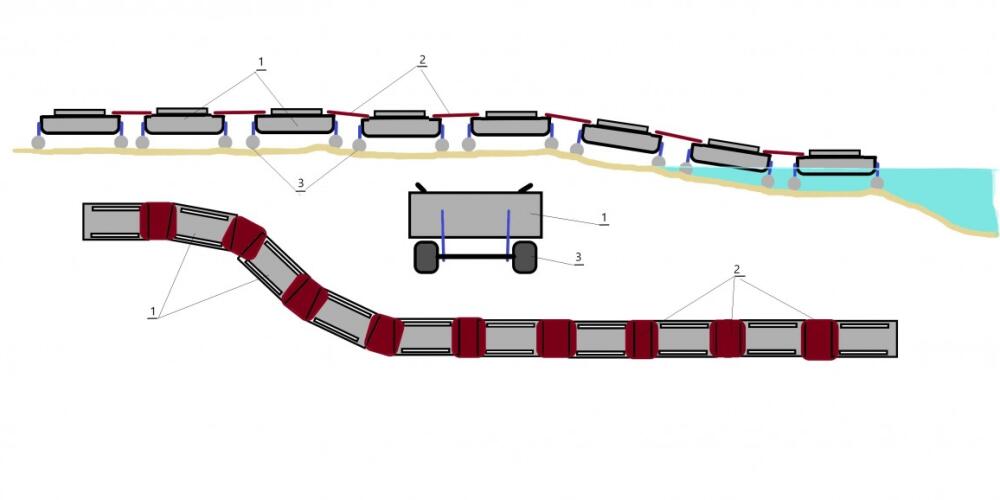
Pontoon bridges usually consist of floating parts over which small bridges are placed. They usually serve as temporary bridges, and are most often used in war.
Such floating bridges must be portable and easily foldable from transport form to floating form.
Floating elements are usually transported on special vehicles from which they are placed in the water.
The installation of the pontoon bridge could be much faster if the floating elements were placed on the road and only then lowered into the water.
A pontoon like this could be made very simply, as shown in the picture above.
Each floating element(1) could be placed on wheels(3) like a closed tractor trailer. Those floating elements (1) would have four wheels (3) each, and each wheel (3) should have its own electric motor for starting. The two front wheels would have to be able to turn left and right on the road, just like a trailer. The floating element (1) should be driven by electric motors in the wheels (3), and the rotation of the front wheels would be done by a small servo motor with the help of a small computer. A larger number of floating elements (1) would be connected to each other by a steel plate (1), which is placed on two floating elements (1) with a small shaft, so that it can be partially rotated left and right. By connecting a large number of such floating elements (1) with steel plates (2), a long vehicle powered by electricity would be obtained. The electric energy generator on a vehicle could be placed on any floating element(1). From that vehicle, the driver could control this series of connected floating elements (1) via computer. The driver would control the first floating element(1), while all other floating elements would be controlled by their small computer, which would have the task of driving its element exactly along the tracks taken by the previous floating element(1). In this way, a bridge like this could move on the road like a tow truck several hundred meters long. The width of the floating elements should be at least 4 meters so that the bridge does not topple over while vehicles are crossing it on the water. When the front floating elements (1) enter the water, the wheels (3) on these elements would separate from the ground, and then these floating elements (1) would be pushed by the rear floating elements (1) that are on the ground.
In the same way, after use, this pontoon bridge would be pulled out of the water. The floating elements (1) located on the river bank would move towards the bank with their wheels (3), thus dragging the entire pontoon bridge behind them.
Tags
Featured articles